For many food systems advocates, building and sustaining local food economies is a top priority. While investing in our local food economies is important, our food providers need to deeply commit to food justice. A focus on food just helps create an affordable, healthy and environmentally sustainable food system for all.
This is where food hubs can play an important role.
The term “food hub” is relatively new, but networks of individuals have informally connected small producers to buyers for generations. This is especially true among producers of color who were often shut out of mainstream markets.
At their core, food hubs are businesses or organizations that manage the collection, distribution and marketing of food products — primarily from local and regional producers — to strengthen and satisfy wholesale, retail and institutional demands. Food hubs reinforce transparency throughout our food system and increase the financial success of farmers and suppliers.

How can food hubs be racial equity change agents?
In the 2015 National Food Hub Survey, Race Forward: The Center for Racial Justice Innovation learned many food hubs share a general commitment to diversity and racial equity, but they struggle with translating those values into daily operational decisions. Wanting to change this, Race Forward: The Center for Racial Justice Innovation and The Center for Social Inclusion (now: Race Forward), partnered with the W.K. Kellogg Foundation and the Surdna Foundation to develop a simple, accessible and easy-to-read racial equity framework to help food hubs deepen their racial equity practices.
Race Forward’s Racial Equity Implementation Guide (REIG) helps food hubs implement three steps of an ongoing process to explore and dismantle long-held beliefs:
- Identify general areas of food hub operations.
- Introduce the core principles of a racial equity framework.
- Use the principles as a lens to examine each area of food hub operations.
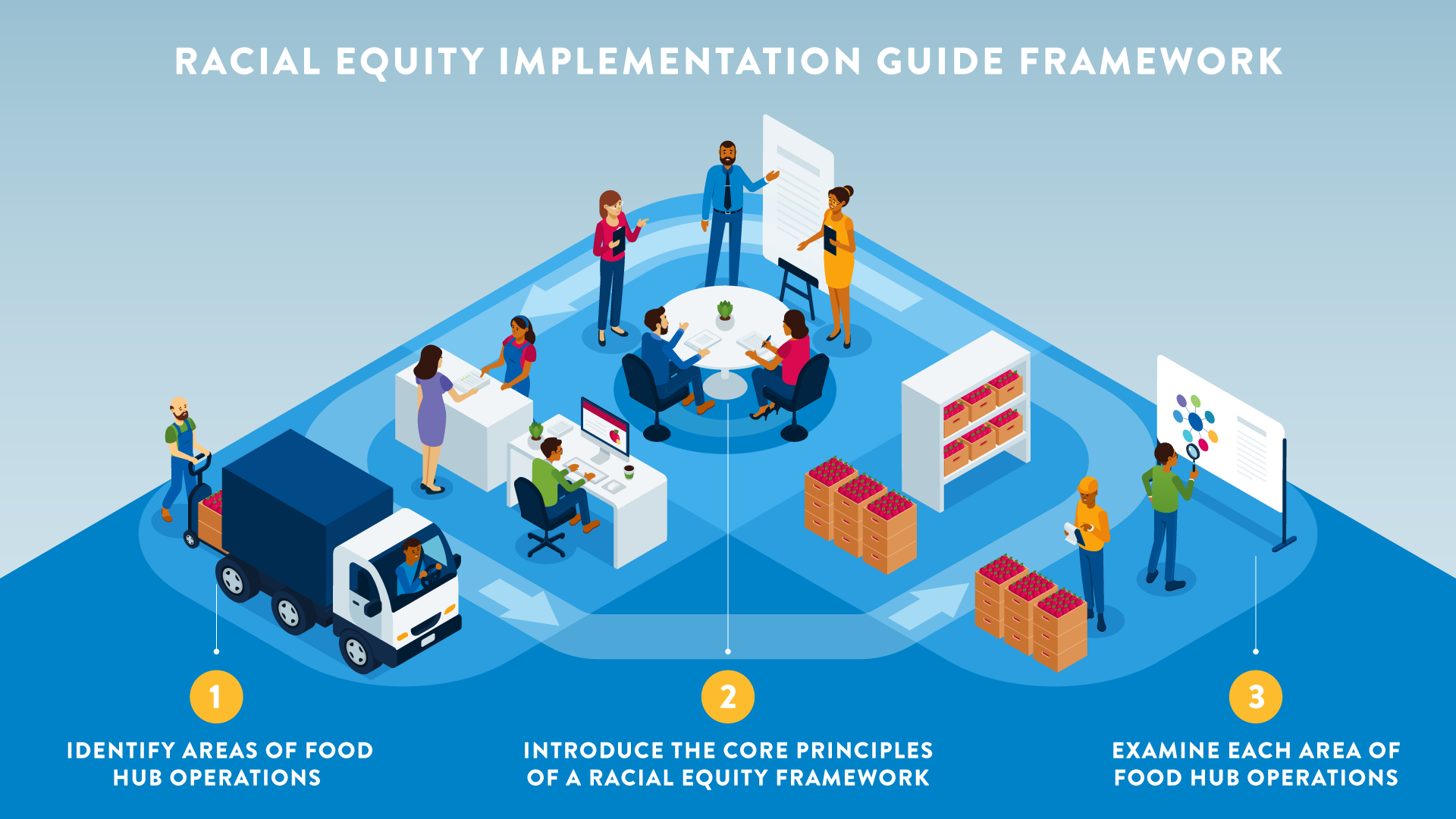
This racial equity approach is based on 11 principles grounded in shifting a greater share of power to communities of color. This shift of power can transform decision-making, leadership and operational organization among food hubs.
Racial equity principles
- Equitable access
- Equitable contracts
- Equitable decision-making
- Respectful land use
- Equitable governance
- Equitable ownership
- Mutual growth
- Fair and living wages
- Just working conditions
- Regenerative investments
- Movement building
Advancing racial equity within food hub operations
The slideshow below is a snapshot of the seven most common areas of food hub operations and key questions that help elevate the core principles of a racial equity framework within each operation.
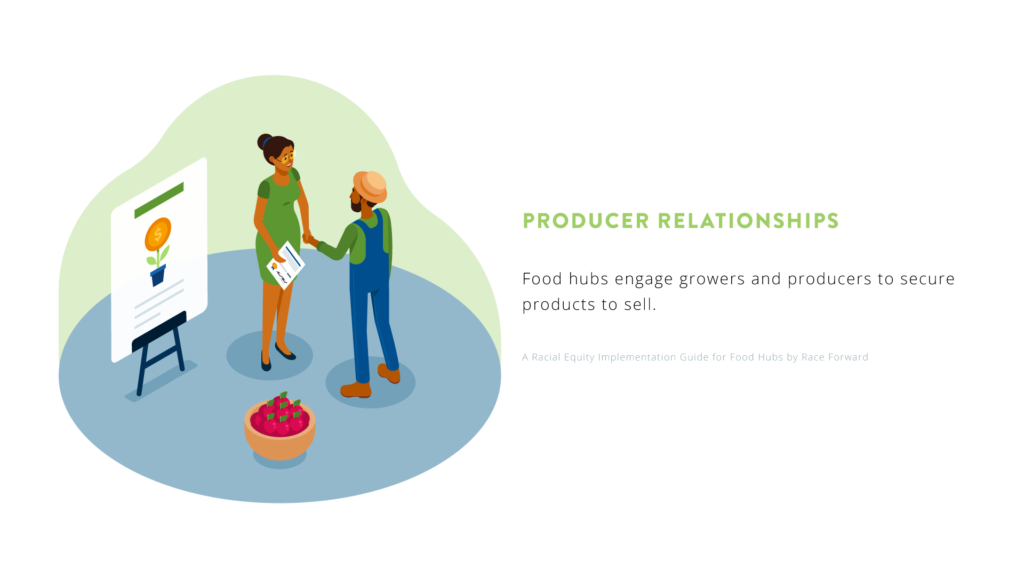
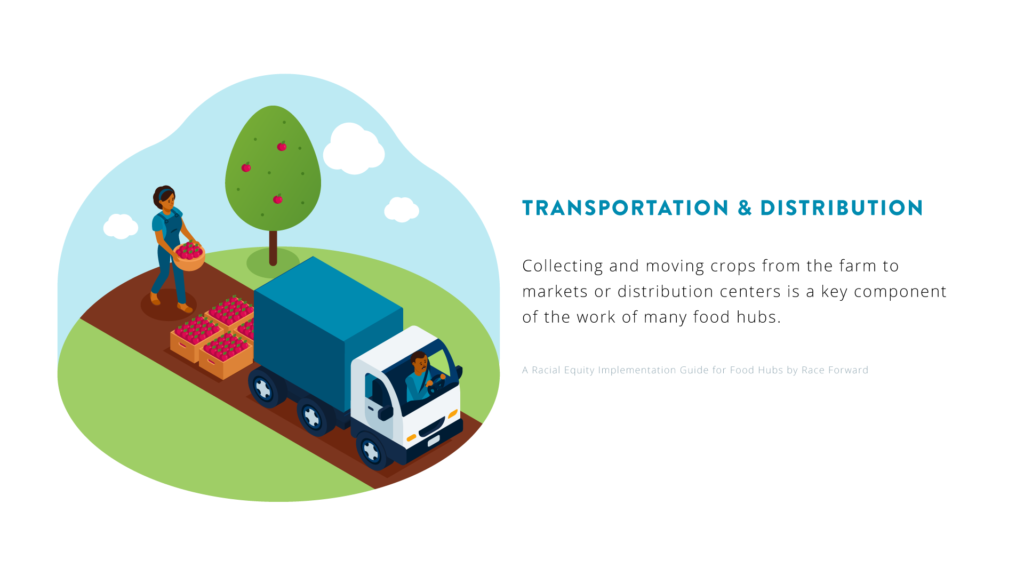
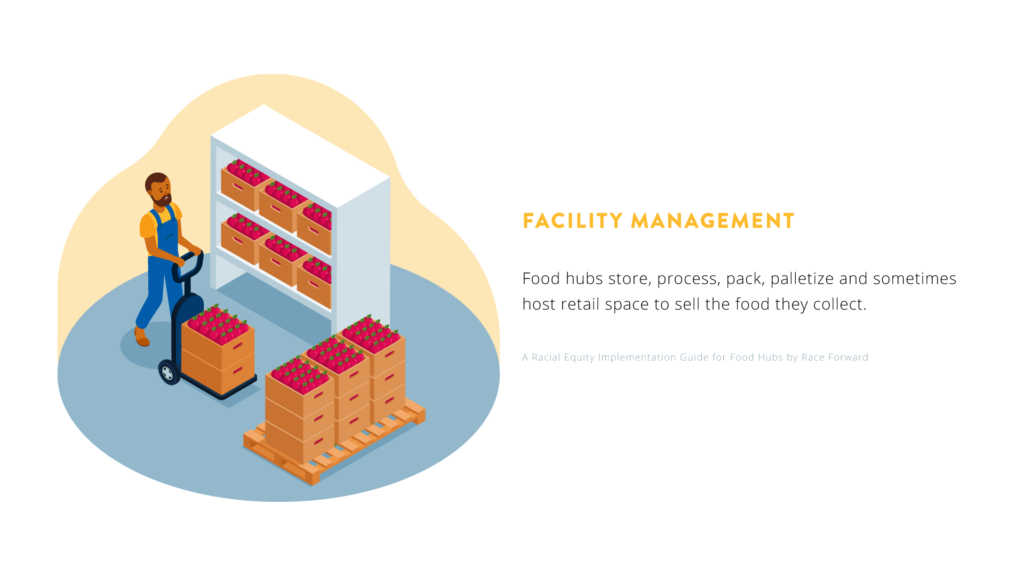

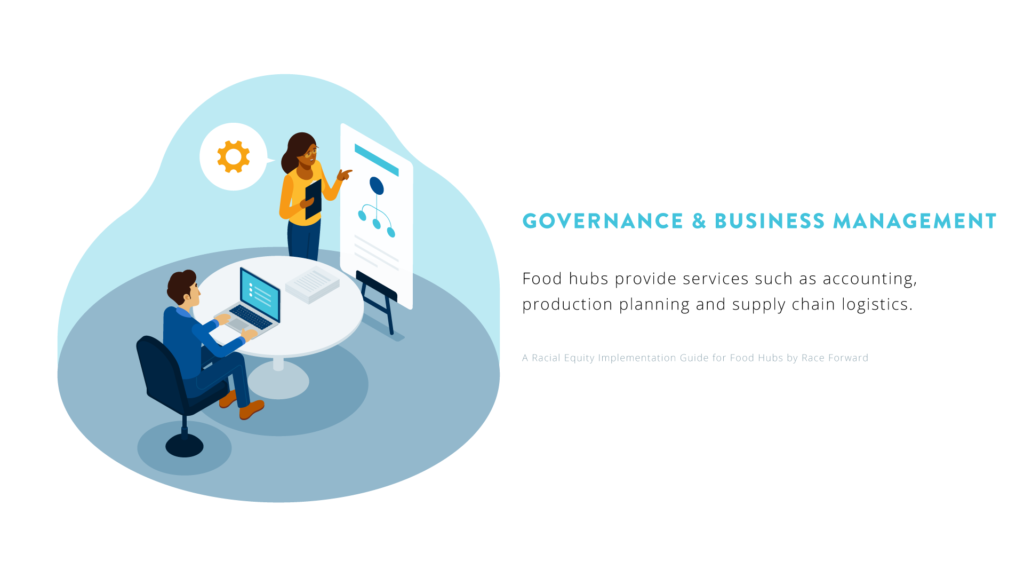
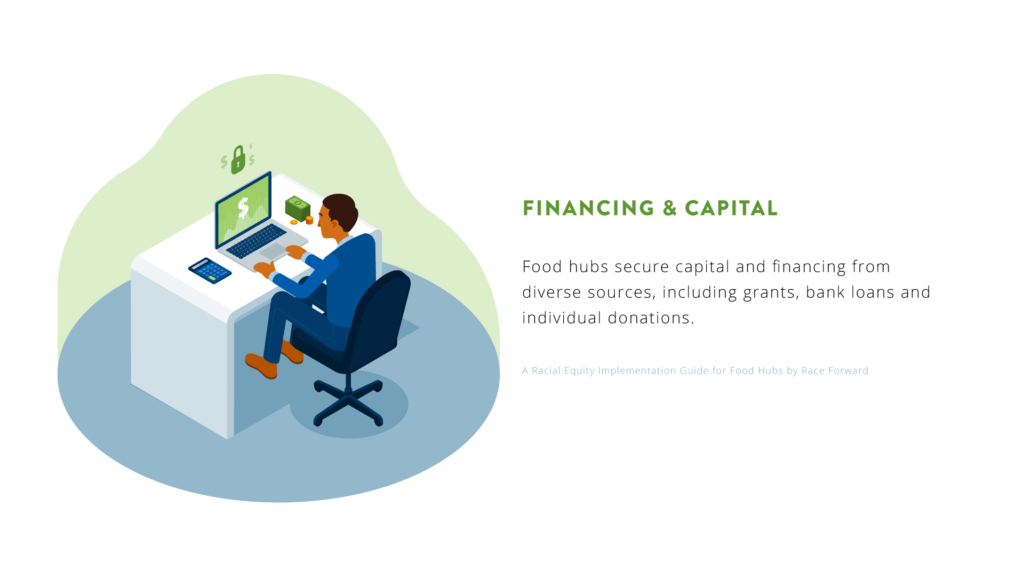
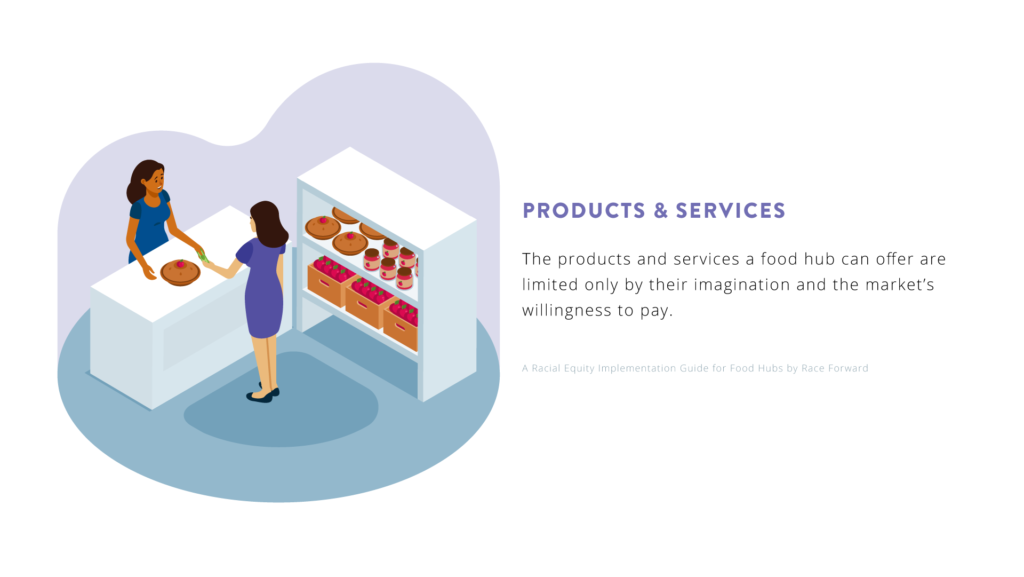
This work isn’t easy — there is no quick or magical fix to the challenge of integrating racial inequity into the roots and culture of an institution – let alone our entire food system. The REIG Framework can serve as a first step in an ongoing process of creating a more just food system for all.

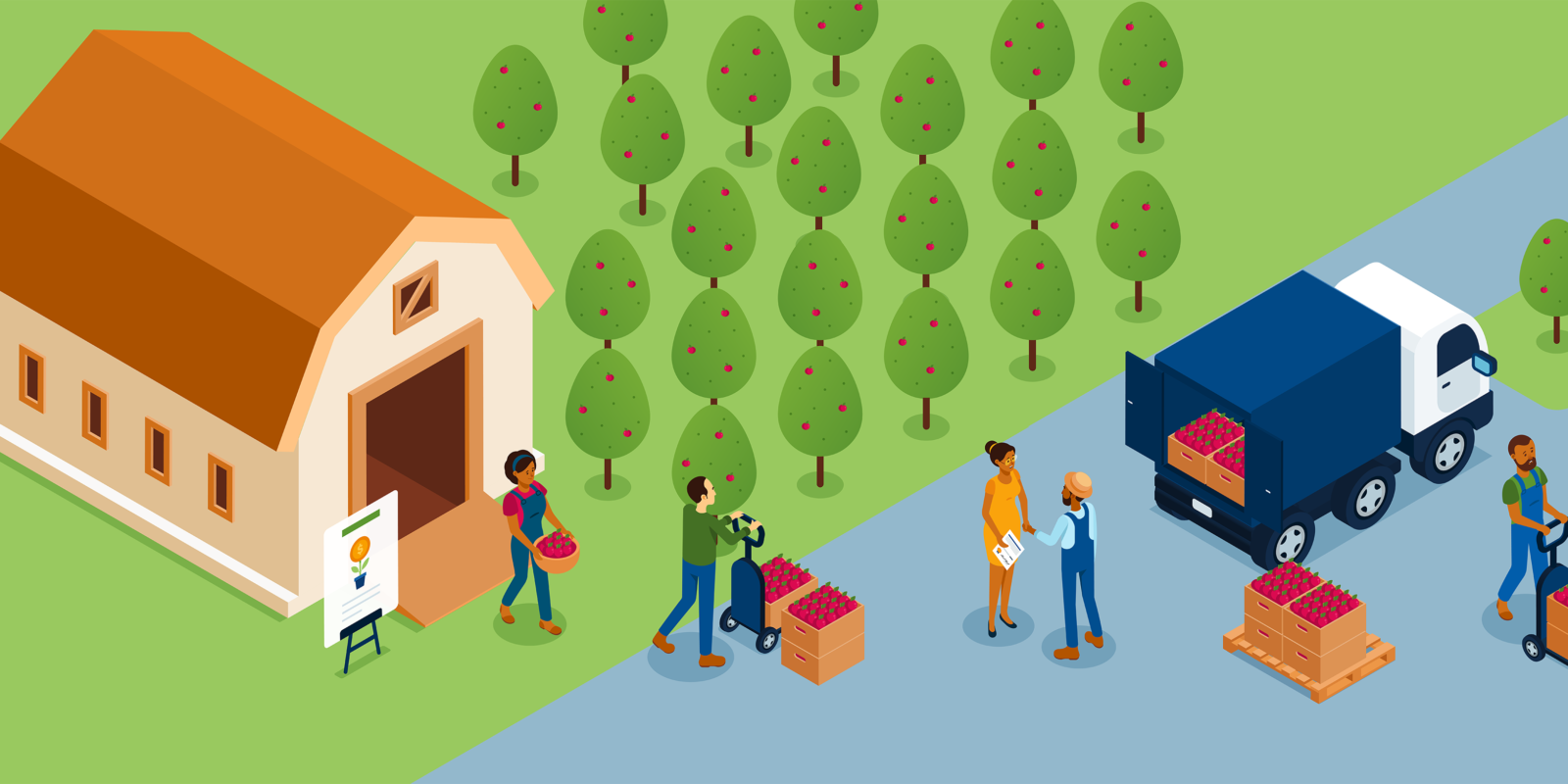




Comments